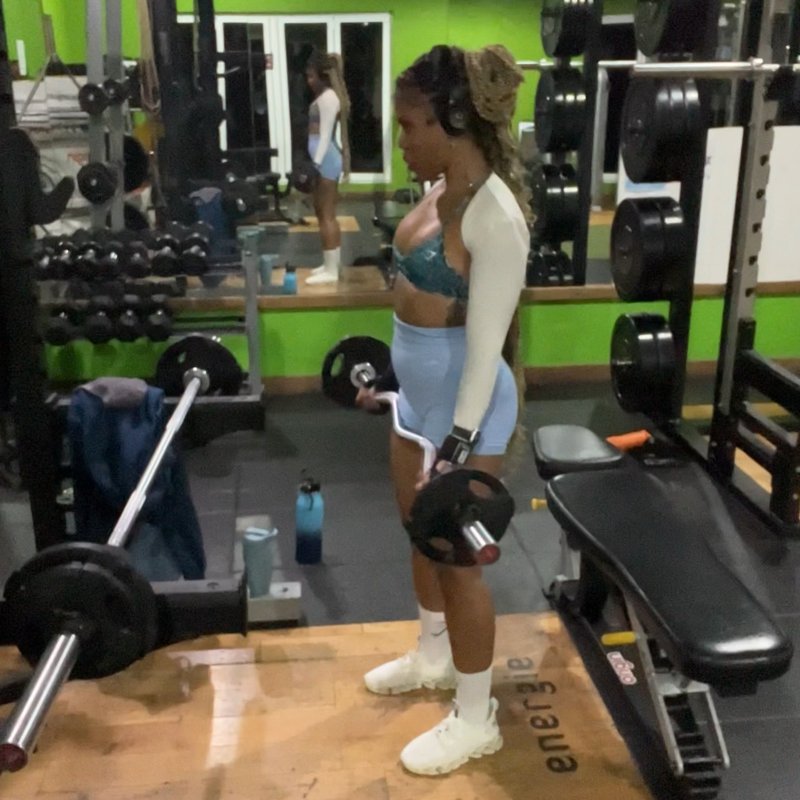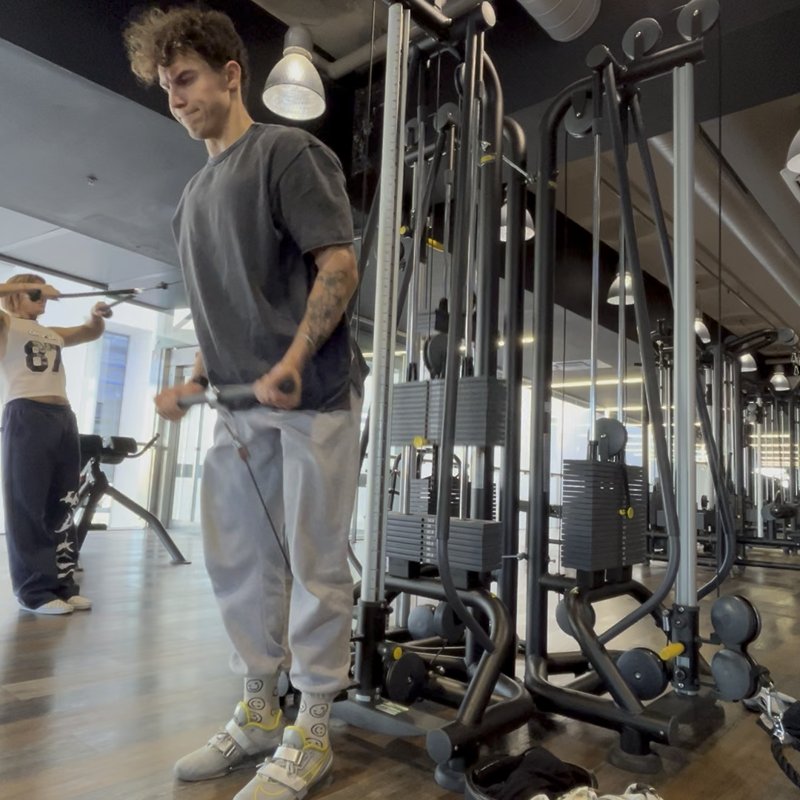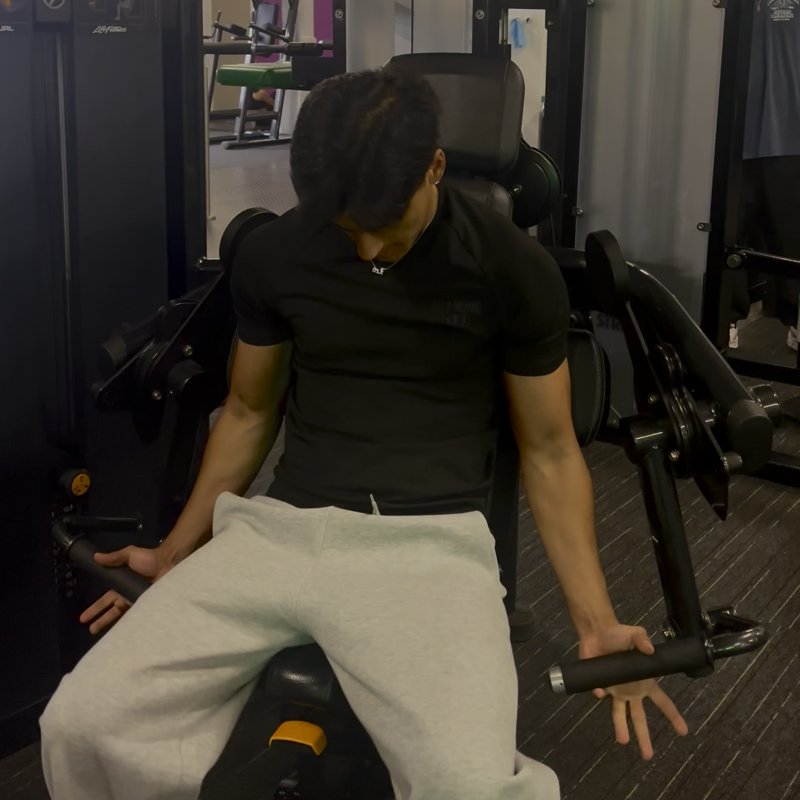Cable Curl: The Ultimate Guide
The Cable Curl is a biceps isolation exercise performed using a cable machine that provides constant tension throughout the entire range of motion, leading to effective biceps development with reduced joint stress.
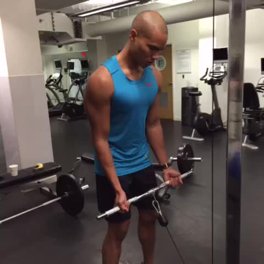
Quick Facts
Key Benefit
Constant tension biceps development
Primary Muscles
Biceps, Brachialis
Secondary Muscles
Abdominals, Anterior Deltoids, Forearms
Equipment
cable machine
Difficulty
Beginner
Type
Strength
In This Guide
Ready to master the Cable Curl?
Track your progress, see improvements over time, and build strength consistently.
Download GravitusThe Cable Curl is one of the most effective biceps exercises due to its unique ability to maintain consistent tension throughout the entire range of motion. Unlike free weight curls where tension varies based on the position relative to gravity, the cable machine provides resistance that remains constant from the bottom to the top of the movement. This constant tension is particularly valuable for muscle development as it eliminates the "resting points" that occur with traditional curling exercises. The biceps must work continuously through each repetition, potentially leading to greater muscle fiber recruitment and growth stimulation. Additionally, the cable machine allows for a smoother, more controlled movement pattern that many lifters find places less stress on the wrists, elbows, and shoulder joints compared to barbell or dumbbell variations. This makes the cable curl an excellent option for those with joint concerns or as a high-volume supplementary exercise. The versatility of cable machines also allows for numerous handle attachments and positioning variations, enabling you to target different aspects of the biceps muscles from multiple angles. From standard straight bar attachments to single-handle isolation work, the cable curl can be adapted to meet various training needs and preferences. Whether your goal is to build bigger biceps, increase arm strength, or simply add variety to your training program, the cable curl deserves a place in your arm development arsenal.
Benefits of Cable Curls
The cable curl offers several distinct advantages compared to other biceps exercises.
Constant Tension
Provides continuous resistance throughout the entire range of motion, eliminating the "resting points" that occur with free weights due to changing leverage.
Joint-Friendly
The smooth, controlled resistance and natural movement arc may reduce stress on the wrists, elbows, and shoulders compared to some free-weight variations.
Isolation Focus
The fixed movement path helps isolate the biceps with minimal involvement from other muscle groups, enhancing mind-muscle connection.
Peak Contraction
Maintains tension at the top of the movement, allowing for an intense squeeze at full biceps contraction that's often diminished with free weights.
Versatility
Multiple cable heights, handle attachments, and stance positions allow for targeting different portions of the biceps from various angles within the same workout.
Proper Form & Technique
Setup
- Set the cable pulley to the lowest position on the machine.
- Select an appropriate weight that allows controlled movement with proper form.
- Attach your preferred handle (straight bar, EZ-bar, rope, or single handle).
- Stand facing the cable machine with feet shoulder-width apart for stability.
- Grasp the handle with an underhand grip (palms facing up) at approximately shoulder width.
- Step back slightly to create initial tension on the cable while maintaining a stable position.
- Position your upper arms close to your sides and perpendicular to the floor.
- Maintain a slight bend in the knees with hips slightly behind the shoulders for stability.
- Stand with a neutral spine position - not excessively arched or rounded.
Movement
- Engage your core to stabilize your body throughout the movement.
- Keeping your upper arms stationary by your sides, exhale as you curl the handle upward by flexing at the elbows.
- Focus on using only your biceps to perform the movement, avoiding shoulder or back involvement.
- Continue curling until your biceps are fully contracted and forearms are roughly parallel to the floor or slightly higher.
- Pause briefly at the top position, focusing on squeezing your biceps.
- Inhale as you slowly lower the weight with control, resisting the pulling force of the cable.
- Lower until your arms are nearly straight, maintaining a slight bend in the elbows to keep tension on the biceps.
- Repeat for the desired number of repetitions, maintaining strict form throughout.
Key Form Tips
Elbow Position
Keep your elbows fixed by your sides throughout the movement - any forward or backward drift reduces biceps engagement.
Wrist Alignment
Maintain straight wrists during the curl, avoiding excessive flexion or extension that can cause strain.
Body Stability
Resist the urge to rock back and forth to assist the curl - stay planted with a stable torso to isolate the biceps properly.
Cable Tension
Keep tension on the cable throughout the entire set, not allowing the weight stack to touch down between repetitions.
Full Range
Utilize the full range of motion from near extension to complete contraction for maximum biceps development.
Muscles Worked
Primary Muscles
- biceps: The two-headed muscle on the front of the upper arm, responsible for elbow flexion and supination of the forearm, is the primary target of this exercise.
- brachialis: Located beneath the biceps, this muscle assists with elbow flexion and is engaged throughout the curling motion.
Secondary Muscles
- brachioradialis: A forearm muscle that assists in elbow flexion, particularly during the early phase of the curl.
- anterior deltoids: The front shoulder muscles provide minimal assistance in stabilizing the shoulder joint during the exercise.
- forearms: The muscles of the forearm that control wrist position and assist in gripping the handle throughout the movement.
- abdominals: The abdominals and lower back work isometrically to stabilize the body against the pulling force of the cable.
Common Mistakes and How to Fix Them
Using Momentum
Swinging the body or using hip thrust to assist the curl reduces biceps engagement. Maintain a stable body position throughout the movement, using only the biceps to perform the curl. If you cannot complete the movement without momentum, reduce the weight until proper form can be maintained.
Moving Upper Arms
Allowing the elbows to drift forward or away from the sides during the curl shifts focus away from the biceps. Keep your upper arms stationary against your sides throughout the entire movement. Imagine your elbows are pinned to your ribs to maintain proper positioning.
Incomplete Range of Motion
Not fully extending or contracting the arms limits biceps development. Lower the weight until your arms are almost completely extended (maintaining slight tension) and curl until your biceps are fully contracted. Focus on feeling the complete stretch and contraction of the muscle.
Standing Too Close
Positioning yourself too close to the cable stack reduces the effectiveness of the exercise. Step back enough that there is constant tension on the cable throughout the entire range of motion, even at the bottom position of the curl.
Excessive Wrist Flexion
Bending the wrists too much during the curl can cause strain and reduce biceps focus. Maintain neutral wrist alignment with your hands in line with your forearms throughout the movement, as if your wrists were braced.
Cable Curl Variations
Attachment Variations
-
Straight Bar Cable Curl
Using a straight bar attachment for balanced bilateral development and maximal biceps peak contraction.
-
EZ Bar Cable Curl
Using an EZ-curl bar attachment that provides angled grip positions, potentially reducing wrist strain for some lifters.
-
Rope Cable Curl
Using a rope attachment that allows for rotation of the wrists at the top of the movement, emphasizing supination for greater biceps activation.
-
Single Arm Cable Curl
Using individual handles to work one arm at a time, allowing for focused attention on each biceps independently.
Position Variations
-
High Cable Curl
Performed with the cable set at a high position, pulling downward to create a different angle of resistance and biceps stimulation.
-
Seated Cable Curl
Performed while seated on a bench or stability ball, eliminating lower body involvement for stricter biceps isolation.
-
Kneeling Cable Curl
Performed in a kneeling position, creating a more stable platform and potentially greater core engagement.
-
Lying Cable Curl
Performed while lying on a bench with the cable positioned overhead, creating a unique resistance angle throughout the curl.
Frequently Asked Questions
Neither is universally "better" - each has distinct advantages and ideal applications. Cable curls provide constant tension throughout the entire range of motion and often create less joint stress, making them excellent for higher-rep training, finishing movements, or those with joint concerns. Barbell curls typically allow for heavier loading and total weight moved, while dumbbell curls offer greater range of motion and address strength imbalances between arms. For optimal biceps development, incorporating all three variations at different points in your training program is ideal. Cable curls are particularly valuable for ensuring tension at the top of the movement (where free weights lose resistance) and for maintaining continuous muscle activation without "rest points" during the set.
There is no single "best" attachment - each targets the biceps slightly differently and provides unique benefits. The straight bar allows for heavier loading and balanced development between arms. The EZ-bar provides angled grip positions that may be more comfortable for the wrists. The rope attachment enables a rotational component at the top of the movement, potentially enhancing supination for greater biceps activation. Single handles allow independent arm training and may help address muscle imbalances. For complete biceps development, rotating between different attachments throughout your program is ideal. If forced to choose one, the straight bar typically provides the most direct and comprehensive biceps stimulus for most lifters.
The appropriate weight for cable curls depends on your training experience, goals, and the specific technique being used. Since cable curls are typically an isolation exercise where strict form is crucial, most lifters will use moderate weights that allow for controlled movement without body English. For hypertrophy (muscle building), select a weight that allows you to complete 8-12 controlled repetitions with proper form. For endurance and metabolic stress, lighter weights for 12-20 repetitions can be effective. The weight should be challenging enough that the last few repetitions require significant effort, but not so heavy that form breaks down. Many men might use approximately 30-60 pounds with a straight bar attachment, while women might typically use 15-40 pounds, though these ranges vary considerably based on individual factors.
The ideal placement of cable curls in your workout depends on your specific goals. If your primary objective is to build strength with free weight movements like barbell curls, perform those first when your energy and strength are highest, then use cable curls as a finishing movement. If maximizing the mind-muscle connection and isolating the biceps is your focus, you might place cable curls earlier in your session. Many bodybuilders follow a heavy-to-light approach, starting with compound free weight movements and progressing to more isolated, controlled exercises like cable curls later in the workout. Occasionally performing cable curls first as a pre-exhaustion technique can increase mind-muscle connection during subsequent exercises. For most trainees, cable curls work well as a secondary or finishing movement after heavier free weight work.
Video Demonstrations
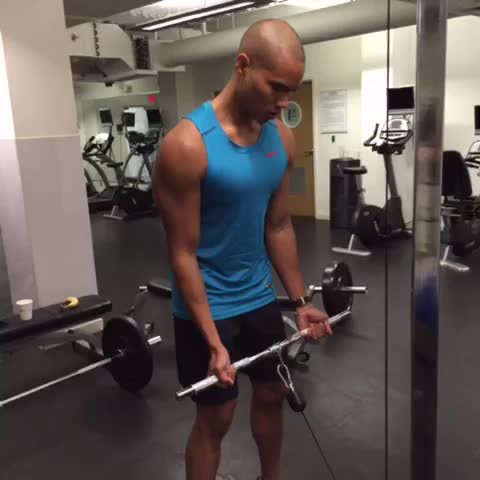
Log in to watch video demonstrations
Login to Watch3 video demonstrations available
Find more video demonstrations in the Gravitus app
Tips from the Community
-

When you keep your elbows close to the body this exercise targets the outer bicep. When you keep your elbows further away, this targets the inner bicep.
-

Keep elbow steady and contract the muscle for a second and back fully
Track your progress with Gravitus
Download Gravitus to log your workouts, track your progress, and join a community of fitness enthusiasts.

Helpful Resources
One Rep Max Calculator
Find your one rep max for any exercise without maximal testing. Essential for developing effective strength training programs.
Calculate 1RMWorkout Programs
Follow structured workout programs created by fitness professionals to maximize your strength and muscle gains.
View Programs


